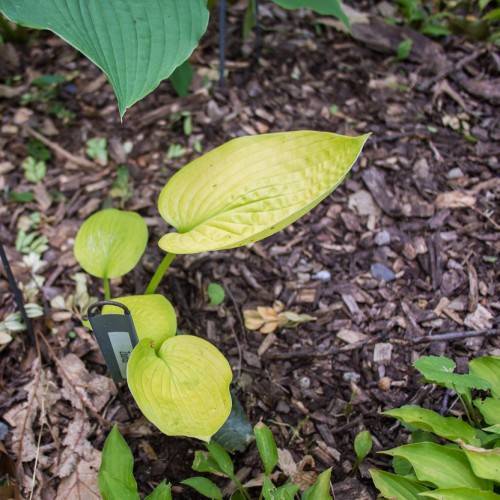
hosta
Hosta 'Zounds'
Cycle:
Herbaceous Perennial
Watering:
Average
Hardiness Zone:
3 - 8
Flowers:
Flowers
Sun:
Part shade,full shade
Leaf:
Yes
Growth Rate:
High
Maintenance:
Low
watering
Hosta 'Zounds' should be watered deeply on a regular basis and then allowed to dry out slightly before watering again. In the summer, water when the soil surface begins to dry out, typically every 1 to 3 days. During cooler months, water every 5 to 7 days. It is important to make sure that the soil is not allowed to become bone dry; be consistent and don't let the soil dry out completely. Keep in mind that the soil should dry out between each watering so that the plant's root system does not become water logged.
sunlight
Hosta 'Zounds' will thrive best in bright indirect light. It can tolerate full shade but will not flower as strongly as if planted in brighter sunlight. Hours of direct sunlight in the summertime should be limited to 2 to 3 hours per day, ideally morning or early afternoon, and set at a distance that will not scorch the foliage. Conversely, during the winter months, exposure to longer uninterrupted sections of direct, bright light can be beneficial for blooms the following growing season. Additionally, it is important to keep in mind that south- or west-facing sites will provide the brightest and fullest light exposures that are seen in more northern climates.
pruning
Hosta 'Zounds' should be pruned in the late spring season when new growth is apparent, as most species of hosta benefit from occasional pruning. To get the desired shape, remove all dead leaves and flower stems, and any discoloured or frail foliage. For Hosta 'Zounds', it is best to take off no more than 1-third of the foliage each time it is pruned; this encourages full, bushy growth and helps to keep the shape of the plant in tact. Additionally, it is best to prune the taller growth of the plant first, and then proceed to the shorter vertical shoots. As with any pruning, it is important to use sharp shears, and cut at a 45 degree angle to ensure that the resulting shape of the plant will be natural and pleasing.
